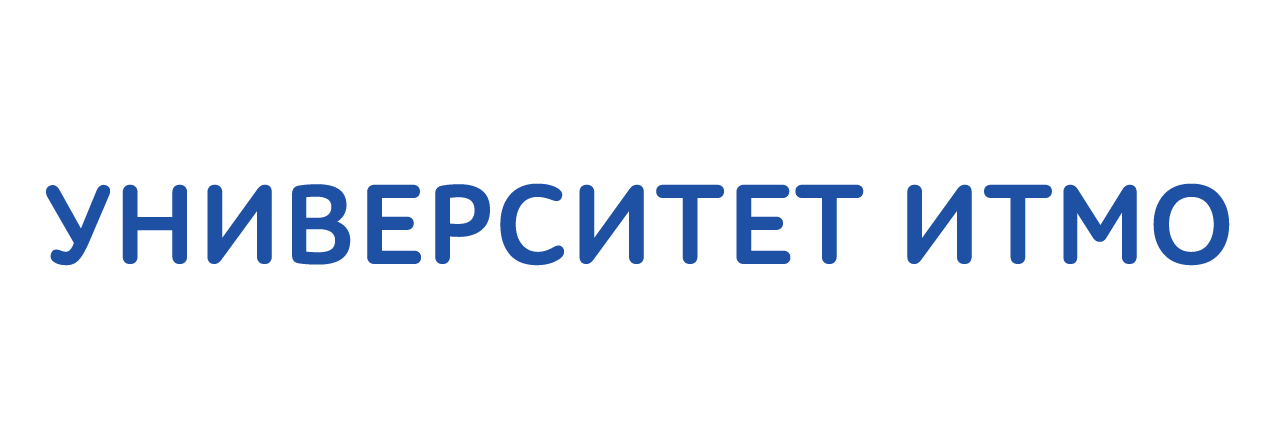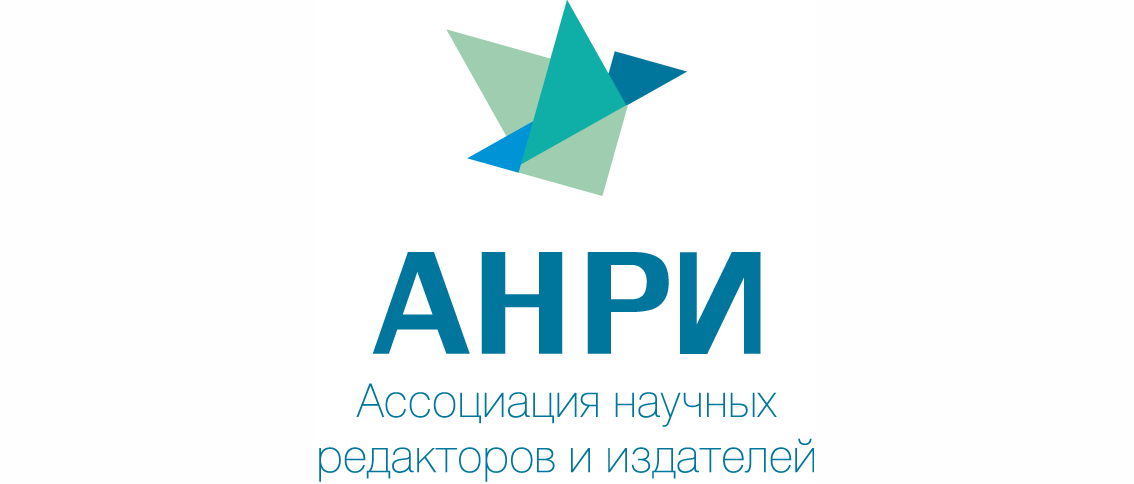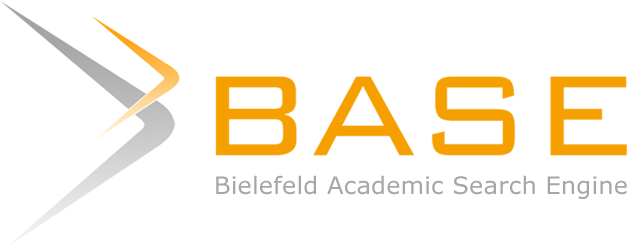Меню
Публикации
2025
2024
2023
2022
2021
2020
2019
2018
2017
2016
2015
2014
2013
2012
2011
2010
2009
2008
2007
2006
2005
2004
2003
2002
2001
Главный редактор

НИКИФОРОВ
Владимир Олегович
д.т.н., профессор
Партнеры
doi: 10.17586/2226-1494-2023-23-4-685-695
УДК 535.3: 535.015: 535.34: 535.36: 577.342
Численное исследование влияния концентрации метгемоглобина в крови на поглощение света в коже человека
Читать статью полностью
Язык статьи - русский
Ссылка для цитирования:
Аннотация
Ссылка для цитирования:
Беликов А.В., Чучин В.Ю. Численное исследование влияния концентрации метгемоглобина в крови на поглощение света в коже человека // Научно-технический вестник информационных технологий, механики и оптики. 2023. Т. 23, № 4. С. 685–695. doi: 10.17586/2226-1494-2023-23-4-685-695
Аннотация
Введение. Лазеры широко применяются в дерматологии для удаления телеангиэктазий. Повышение эффективности склерозирования глубоколежащих и крупных телеангиэктазий лазерным излучением, возможно за счет изменения оптического пропускания кожи при ее нагреве и преобразовании гемоглобина, содержащегося в крови кожи, в метгемоглобин. Влияние концентрации метгемоглобина в крови на поглощение света в коже человека мало изучено, что определяет актуальность данной работы в контексте поиска путей повышения эффективности лазерного удаления телеангиэктазий. Метод. Разработаны численные семислойные оптические модели кожи человека без и с телеангиэктазией. В диапазоне длин волн 400–1600 нм рассчитаны спектры коэффициента экстинкции и степени изменения оптического пропускания цельной крови и слоев кожи в моделях кожи без и с артериолярной и венулярной телеангиэктазиями при различных концентрациях метгемоглобина в крови. На основании анализа спектров выбраны длины волн, на которых при преобразовании гемоглобина в метгемоглобин происходит наибольшее изменение оптического пропускания цельной крови и слоев кожи. Для выбранных длин волн методом Монте-Карло смоделирован ход лучей и получены распределения поглощенной оптической мощности в каждом слое кожи без и с телеангиэктазией при различных концентрациях метгемоглобина. Основные результаты. Обнаружено, что при преобразовании гемоглобина в метгемоглобин наибольшее уменьшение степени изменения оптического пропускания цельной крови происходит на длинах волн 629 нм и 1105 нм, а наибольшее увеличение — на 447 нм и 578 нм. Показано, что с ростом концентрации метгемоглобина с 0 до 100 % в коже доля поглощенной оптической мощности в слое поверхностного сплетения сосудов без и с телеангиэктазией на длинах волн 629 нм и 1105 нм повышается, а на 441 нм и 574 нм — снижается. При этом в слое глубокого сплетения сосудов на длинах волн 441 нм, 574 нм и 1105 нм доля поглощенной оптической мощности повышается, а на длине волны 629 нм сначала с ростом концентрации метгемоглобина до 25 % повышается, а затем снижается, но до значений, превышающих значение доли поглощенной оптической мощности без метгемоглобина. Обсуждение. Изменение оптического пропускания, связанное с заменой гемоглобина крови на метгемоглобин, в большей степени проявляется для слоя поверхностного сплетения сосудов, что связано с высоким содержанием крови в нем и ограниченным вкладом вышележащих слоев кожи в деформацию спектра падающего на этот слой света. В коже с телеангиэктазией изменение концентрации метгемоглобина изменяет долю поглощенной оптической мощности на большую величину, чем в коже без телеангиэктазии, что можно связать с увеличением объемной концентрации крови слоев кожи с телеангиэктазией и увеличением их толщины. Полученные результаты могут быть применены при разработке лазерных систем и технологий лечения заболеваний кожи, в том числе для лазерного склерозирования телеангиэктазий.
Ключевые слова: коэффициент поглощения, коэффициент рассеяния, кожа, сосуд, телеангиэктазии, оптическая модель кожи, лазерное склерозирование
Список литературы
Список литературы
- Беликов А.В., Храмов В.Ю. Перспективы развития инновационных направлений исследований в области лазерных систем и биомедицинских оптических технологий // Научно-технический вестник Санкт-Петербургского государственного университета информационных технологий, механики и оптики. 2010. № 5(69). С. 110–114.
- Goldman M.P., Weiss R.A. Sclerotherapy E-Book: Treatment of Varicose and Telangiectatic Leg Veins (Expert Consult). Elsevier Health Sciences, 2016. 455 p.
- Ливандовский Ю.А., Павлова О.Ю. Телеангиэктазии // Клиническая дерматология и венерология. 2010. Т. 8. № 5. С. 6–15.
- Karsai S., Roos S., Raulin C. Treatment of facial telangiectasia using a dual‐wavelength laser system (595 and 1,064 nm): a randomized controlled trial with blinded response evaluation // Dermatologic Surgery. 2008. V. 34. N 5. P. 702–708. https://doi.org/10.1111/j.1524-4725.2008.34131.x
- Sadick N., Sorhaindo L. Laser treatment of telangiectasias and reticular veins // The Vein Book. Academic Press, 2007. P. 157–166. https://doi.org/10.1016/B978-012369515-4/50019-3
- Ross E.V., Domankevitz Y. Laser treatment of leg veins: physical mechanisms and theoretical considerations // Lasers in Surgery and Medicine. 2005. V. 36. N 2. P. 105–116. https://doi.org/10.1002/lsm.20141
- Nachabé R., Evers D.J., Hendriks B.H.W., Lucassen G.W., Van der Voort M., Wesseling J., Ruers T.J.M. Effect of bile absorption coefficients on the estimation of liver tissue optical properties and related implications in discriminating healthy and tumorous samples // Biomedical Optics Express. 2011. V. 2. N 3. P. 600–614. https://doi.org/10.1364/boe.2.000600
- Barton J.K., Frangineas G., Pummer H., Black J.F. Cooperative phenomena in two‐pulse, two‐color laser photocoagulation of cutaneous blood vessels // Photochemistry and Photobiology. 2001. V. 73. N 6. P. 642–650. https://doi.org/10.1562/0031-8655(2001)0730642cpitpt2.0.co2
- Chan E.K., Sorg B., Protsenko D., O’Neil M., Motamedi M., Welch A.J. Effects of compression on soft tissue optical properties // IEEE Journal of Selected Topics in Quantum Electronics. 1996. V. 2. N 4. P. 943–950. https://doi.org/10.1109/2944.577320
- Tuchin V.V. Tissue Optics: Light Scattering Methods and Instruments for Medical Diagnosis. SPIE Press, 2015. 988 p.
- Drezek R., Dunn A., Richards-Kortum R. Light scattering from cells: finite-difference time-domain simulations and goniometric measurements // Applied Optics. 1999. V. 38. N 16. P. 3651–3661. https://doi.org/10.1364/ao.38.003651
- Tuchin V.V. Optical clearing of tissues and blood using the immersion method // Journal of Physics D: Applied Physics. 2005. V. 38. N 15. P. 2497–2518. https://doi.org/10.1088/0022-3727/38/15/001
- Sterenborg H.J., Van der Leun J.C. Change in epidermal transmission due to UV-induced hyperplasia in hairless mice: a first approximation of the action spectrum // Photo-dermatology. 1988. V. 5. N 2. P. 71–82.
- Yaroslavsky A.N., Schulze P.C., Yaroslavsky I.V., Schober R., Ulrich F., Schwarzmaier H.-J. Optical properties of selected native and coagulated human brain tissues in vitro in the visible and near infrared spectral range // Physics in Medicine & Biology. 2002. V. 47. N 12. P. 2059–2073. https://doi.org/10.1088/0031-9155/47/12/305
- Maier J.S., Walker S.A., Fantini S., Franceschini M.A., Gratton E. Possible correlation between blood glucose concentration and the reduced scattering coefficient of tissues in the near infrared // Optics Letters. 1994. V. 19. N 24. P. 2062–2064. https://doi.org/10.1364/ol.19.002062
- Wen X., Mao Z., Han Z., Tuchin V.V., Zhu D. In vivo skin optical clearing by glycerol solutions: mechanism // Journal of Biophotonics. 2010. V. 3. N 1‐2. P. 44–52. https://doi.org/10.1002/jbio.200910080
- Baranov V.Y., Chekhov D.I., Leonov A.G., Leonov P.G., Ryaboshapka O.M., Semenov S.Y., Tatsis G.P. Heat-induced changes in optical properties of human whole blood in vitro // Proceedings of SPIE. 1999. V. 3599. P. 180–187. https://doi.org/10.1117/12.348378
- Seto Y., Kataoka M., Tsuge K. Stability of blood carbon monoxide and hemoglobins during heating // Forensic Science International. 2001. V. 121. N 1-2. P. 144–150. https://doi.org/10.1016/s0379-0738(01)00465-0
- Wilcox G.L., Giesler Jr G.J. An instrument using a multiple layer Peltier device to change skin temperature rapidly // Brain Research Bulletin. 1984. V. 12. N 1. P. 143–146. https://doi.org/10.1016/0361-9230(84)90227-2
- Бурлева Е.П., Эктова М.В., Беленцов С.М., Чукин С.А., Макаров С.Е., Веселов Б.А. Лечение телеангиэктазий нижних конечностей методом термокоагуляции с использованием аппарата ТС-3000 // Стационарозамещающие технологии: Амбулаторная хирургия. 2018. № 1-2. С. 72–79. https://doi.org/10.21518/1995-14772018-1-2-72-79
- Trelles M.A., Weiss R., Moreno-Moragas J., Romero C., Vélez M., Álvarez X. Treatment of leg veins with combined pulsed dye and Nd:YAG lasers: 60 patients assessed at 6 months // Lasers in Surgery and Medicine. 2010. V. 42. N 9. P. 769–774. https://doi.org/10.1002/lsm.20972
- Dremin V., Zherebtsov E., Bykov A., Popov A., Doronin A., Meglinski I. Influence of blood pulsation on diagnostic volume in pulse oximetry and photoplethysmography measurements // Applied Optics. 2019. V. 58. N 34. P. 9398–9405. https://doi.org/10.1364/ao.58.009398
- Bashkatov A.N., Genina E.A., Tuchin V.V., Altshuler G.B., Yaroslavsky I.V. Monte Carlo study of skin optical clearing to enhance light penetration in the tissue: implications for photodynamic therapy of acne vulgaris // Proceedings of SPIE. 2008. V. 7022. P. 80–91. https://doi.org/10.1117/12.803909
- Meglinski I.V., Matcher S.J. Quantitative assessment of skin layers absorption and skin reflectance spectra simulation in the visible and near-infrared spectral regions // Physiological Measurement. 2002. V. 23. N 4. P. 741–753. https://doi.org/10.1088/0967-3334/23/4/312
- Kim O., McMurdy J., Lines C., Duffy S., Crawford G., Alber M. Reflectance spectrometry of normal and bruised human skins: experiments and modeling // Physiological Measurement. 2012. V. 33. N 2. P. 159–175. https://doi.org/10.1088/0967-3334/33/2/159
- Meglinski I.V., Matcher S.J. Computer simulation of the skin reflectance spectra // Computer Methods and Programs in Biomedicine. 2003. V. 70. N 2. P. 179–186. https://doi.org/10.1016/s0169-2607(02)00099-8
- Walters K.A., Roberts M.S. The structure and function of skin // Dermatological and Transdermal Formulations. CRC press, 2002. P. 19–58.
- Shirshin E.A., Gurfinkel Y.I., Priezzhev A.V., Fadeev V.V., Lademann J., Darvin M.E. Two-photon autofluorescence lifetime imaging of human skin papillary dermis in vivo: assessment of blood capillaries and structural proteins localization // Scientific Reports. 2017. V. 7. N 1. P. 1171. https://doi.org/10.1038/s41598-017-01238-w
- Wang S., Yu X.-Y., Fan W., Li C.-X., Fei W.-M., Li S., Zhou J., Hu R., Lui M., Xu F., Xu J., Cui Y. Detection of skin thickness and density in healthy Chinese people by using high‐frequency ultrasound // Skin Research and Technology. 2023. V. 29. N 1. P. e13219. https://doi.org/10.1111/srt.13219
- Bashkatov A.N., Genina E.A., Tuchin V.V. Optical properties of skin, subcutaneous, and muscle tissues: a review // Journal of Innovative Optical Health Sciences. 2011. V. 4. N 1. P. 9–38. https://doi.org/10.1142/S1793545811001319
- Ding H., Lu J.Q., Wooden W.A., Kragel P.J., Hu X.-H. Refractive indices of human skin tissues at eight wavelengths and estimated dispersion relations between 300 and 1600 nm // Physics in Medicine & Biology. 2006. V. 51. N 6. P. 1479–1489. https://doi.org/10.1088/0031-9155/51/6/008
- Müller G.J., Roggan A. Laser-Induced Interstitial Thermotherapy. SPIE Press, 1995. 549 p.
- Wokalek H., Vanscheidt W., Martay K., Leder O. Morphology and localization of sunburst varicosities: an electron microscopic and morphometric study // The Journal of Dermatologic Surgery and Oncology. 1989. V. 15. N 2. P. 149–154. https://doi.org/10.1111/j.1524-4725.1989.tb03021.x
- Lee S.H., Jeong S.K., Ahn S.K. An update of the defensive barrier function of skin // Yonsei Medical Journal. 2006. V. 47. N 3. P. 293–306. https://doi.org/10.3349/ymj.2006.47.3.293
- Groen D., Gooris G.S., Barlow D.J., Lawrence M.J., Van Mechelen J.B., Demé B., Bouwstra J.A. Disposition of ceramide in model lipid membranes determined by neutron diffraction // Biophysical Journal. 2011. V. 100. N 6. P. 1481–1489. https://doi.org/10.1016/j.bpj.2011.02.001
- Сетейкин А.Ю. Модель расчета температурных полей, возникающих при воздействии лазерного излучения на многослойную биоткань // Оптический журнал. 2005. Т. 72. № 7. С. 42–47.
- Labib R.S., Anhalt G.J., Patel H.P., Diaz L.A. Epidermal proteins. I. Differential extraction and quantitative polyacrylamide gel-electrophoretic analysis of basal spinous-cell proteins of neonatal mouse epidermis // Archives of Dermatological Research. 1985. V. 277. N 4. P. 253–263. https://doi.org/10.1007/BF00509077
- Chaudhary P., Kumar A., Saxena N., Biswal U.C. Hyperbilirubinemia as a predictor of gangrenous/perforated appendicitis: a prospective study // Annals of Gastroenterology: Quarterly Publication of the Hellenic Society of Gastroenterology. 2013. V. 26. N 4. P. 325–331.
- Malskies C.R., Eibenberger E., Angelopoulou E. The Recognition of ethnic groups based on histological skin properties // Proc. of the Vision, Modeling, and Visualization Workshop. Berlin, Germany, 2011. P. 353–360. https://doi.org/10.2312/PE/VMV/VMV11/353-360
- Nicolaides N. Skin lipids. II. Lipid class composition of samples from various species and anatomical sites // Journal of the American Oil Chemists' Society. 1965. V. 42. N 8. P. 691–702. https://doi.org/10.1007/BF02540042
- McMaster J.D., Jenkinson D.M., Noble R.C., Elder H.Y. The lipid composition of bovine sebum and dermis // British Veterinary Journal. 1985. V. 141. N 1. P. 34–41. https://doi.org/10.1016/0007-1935(85)90124-1
- Waller J.M., Maibach H.I. Age and skin structure and function, a quantitative approach (II): protein, glycosaminoglycan, water, and lipid content and structure // Skin Research and Technology. 2006. V. 12. N 3. P. 145–154. https://doi.org/10.1111/j.0909-752X.2006.00146.x
- Yannas I.V., Burke J.F., Gordon P.L., Huang C., Rubenstein R.H. Design of an artificial skin. II. Control of chemical composition // Journal of Biomedical Materials Research. 1980. V. 14. N 2. P. 107–132. https://doi.org/10.1002/jbm.820140203
- Bonnett R., Davies J.E., Hursthouse M.B. Structure of bilirubin // Nature. 1976. V. 262. N 5566. P. 326–328. https://doi.org/10.1038/262326a0
- Ermakov I.V., Gellermann W. Dermal carotenoid measurements via pressure mediated reflection spectroscopy // Journal of Biophotonics. 2012. V. 5. N 7. P. 559–570. https://doi.org/10.1002/jbio.201100122
- Haynes W.M. CRC Handbook of Chemistry and Physics. CRC press, 2016. 2670 p.
- Thomas L.W. The chemical composition of adipose tissue of man and mice // Quarterly Journal of Experimental Physiology and Cognate Medical Sciences. 1962. V. 47. N 2. P. 179–188. https://doi.org/10.1113/expphysiol.1962.sp001589
- Mujkić R., Mujkić D.Š., Ilić I., Rođak E., Šumanovac A., Grgić A., Divković D., Selthofer-Relatić K. Early childhood fat tissue changes—adipocyte morphometry, collagen deposition, and expression of CD163+ cells in subcutaneous and visceral adipose tissue of male children // International Journal of Environmental Research and Public Health. 2021. V. 18. N 7. P. 3627. https://doi.org/10.3390/ijerph18073627
- Arenander E., Grimby G., Hallberg L., Westling H., Carlsten A. The volume and distribution of blood in patients with varicose veins // Scandinavian Journal of Clinical and Laboratory Investigation. 1962. V. 14. N 2. P. 170–178. https://doi.org/10.3109/00365516209079690
- Hale G.M., Querry M.R. Optical constants of water in the 200-nm to 200-μm wavelength region // Applied Optics. 1973. V. 12. N 3. P. 555–563. https://doi.org/10.1364/AO.12.000555
- Calabro K. Modeling biological tissues in light tools [Электронный ресурс]. URL: https://www.synopsys.com/content/dam/synopsys/optical-solutions/documents/modeling-tissues-lighttools-paper.pdf, свободный. Яз. англ. (датаобращения: 09.05.2023)
- Lister T., Wright P.A., Chappell P.H. Optical properties of human skin // Journal of Biomedical Optics. 2012. V. 17. N 9. P. 090901. https://doi.org/10.1117/1.JBO.17.9.090901
- Tozar T., Andrei I.R., Costin R., Pirvulescu R., Pascu M.L. Case series about ex vivo identification of squamous cell carcinomas by laser-induced autofluorescence and Fourier transform infrared spectroscopy // Lasers in Medical Science. 2018. V. 33. N 4. P. 861–869. https://doi.org/10.1007/s10103-018-2445-5
- Sekar S.K.V., Bargigia I., Mora A.D., Taroni P., Ruggeri A., Tosi A., Farina A. Diffuse optical characterization of collagen absorption from 500 to 1700 nm // Journal of Biomedical Optics. 2017. V. 22. N 1. P. 015006. https://doi.org/10.1117/1.JBO.22.1.015006
- Du H., Fuh R.-C.A., Li J., Corkan L.A., Lindsey J.S. PhotochemCAD: a computer‐aided design and research tool in photochemistry // Photochemistry and Photobiology. 1998. V. 68. N 2. P. 141–142. https://doi.org/10.1111/j.1751-1097.1998.tb02480.x
- Bosschaart N., Edelman G.J., Aalders M.C.G., Van Leeuwen T.G., Faber D.J. A literature review and novel theoretical approach on the optical properties of whole blood // Lasers in Medical Science. 2014. V. 29. N 2. P. 453–479. https://doi.org/10.1007/s10103-013-1446-7
- Sommer A., Van Mierlo P.L.H., Neumann H.A.M., Kessels A.G.H. Red and blue telangiectasias: Differences in oxygenation? // Dermatologic Surgery. 1997. V. 23. N 1. P. 55–59. https://doi.org/10.1111/j.1524-4725.1997.tb00009.x
- Khatun F., Aizu Y., Nishidate I. In vivo transcutaneous monitoring of hemoglobin derivatives using a red-green-blue camera-based spectral imaging technique // International Journal of Molecular Sciences. 2021. V. 22. N 4. P. 1528. https://doi.org/10.3390/ijms22041528
- Kuenstner J.T., Norris K.H. Spectrophotometry of human hemoglobin in the near infrared region from 1000 to 2500 nm // Journal of Near Infrared Spectroscopy. 1994. V. 2. N 2. P. 59–65. https://doi.org/10.1255/jnirs.32
- Al’tshuler G.B., Smirnov M.Z., Pushkareva A.E. Modeling of the laser and lamp treatment of telangiectasia // Optics and Spectroscopy. 2004. V. 97. N 1. P. 141–144. https://doi.org/10.1134/1.1781295
























